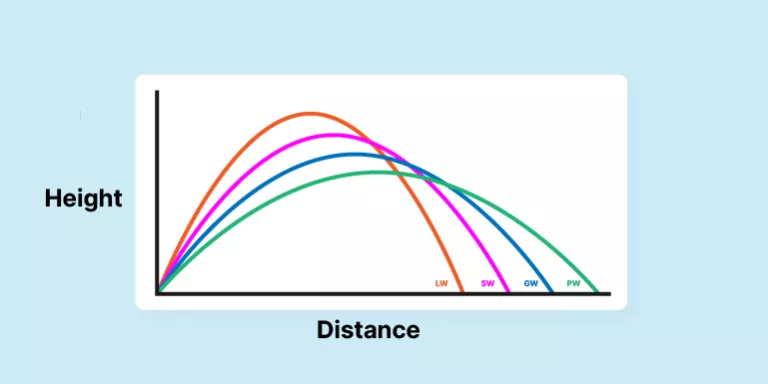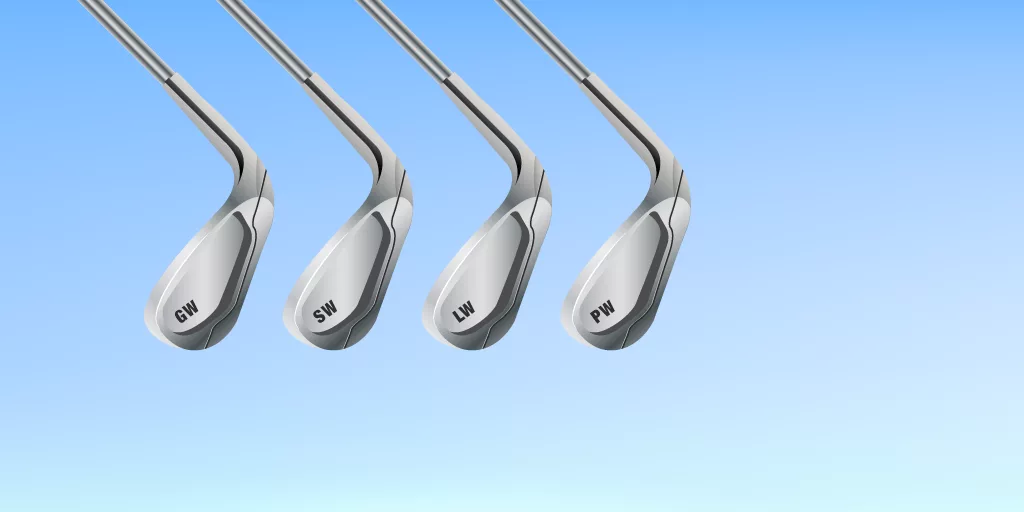
What are the different types of wedges?
The four types of wedges in golf are pitching wedge (PW), sand wedge (SW), lob wedge (LW), and gap wedge (GW).
In this article we'll cover the four main types of wedges:
- Pitching wedge (PW)
- Gap wedge (GW)
- Sand wedge (SW)
- Lob wedge (LW)
Choosing the right wedge is key to transforming short-game shots into successful putts. But are you using the correct one? This guide will help you find out.
Looking to lower your handicap? Focus on your wedge game. Here's why:
- 70% of shots occur within 100 yards.
- These shots impact 80% of your handicap.
We'll investigate the technical aspects affecting your shot, including loft, bounce, leading edge, sole grind, grooves, flex, and shaft construction. Plus, we'll discuss distance gapping and club selection and answer some frequently asked wedge questions.
Let's dive in and enhance your game.
Quick History of the 4 Types of Wedges
Golf is a very old game. The first written record of a game resembling modern golf comes from 16th-century Latin and Dutch books, but there are records of civilizations all around the world playing golf-like, stick-and-ball games as far back as the 11th century Chinese—1,000 years ago.
As the game of golf has evolved over the last millennium, so, too, has the equipment.
Wedges are a relatively new innovation in the history of golf, first appearing in the 1930s as players needed a club with more loft than the niblick for more accurate approach shots. When Spalding Sporting Goods Company produced the first standardized, numbered set of irons, they repurposed the niblick as a 9 iron, which led to the development of the first dedicated approach club: the pitching wedge.
Around the same time, a golfer named Edwin MacClain designed and patented the first sand wedge purely out of personal need; he spent much time hacking away in bunkers with his ill-suited niblick.
For 50 years, golfers made do with these two wedges.
In the 1980s, short-game coach and former NASA physicist Dave Pelz developed the lob wedge in response to more challenging modern greens, which were elevated, sloped, and surrounded by hazards. Pelz's lob wedge had more loft than the pitching wedge and sand wedge, allowing golfers to drill approach shots with a higher launch angle and stick them near the pin with more precision.
Remember what we said earlier about golf constantly evolving?
From the 1930s through the 1990s, golf club manufacturers gradually decreased the loft angles of nearly every club so they could advertise longer distances and sell more clubs.
I mean, who doesn't want to hit the ball further?
This gradual change created a loft angle gap between the standard pitching wedge and sand wedge, and that's how creatively named gap wedges came to be.
What are different wedges used for?
When you're getting ready for your next shot, you have more than one type of wedge available, and each wedge is used for different purposes.
We'll dig into specific wedge features and technical specifications below, but for our purposes in this section, you only need to know about loft—the degree of tilt a club's face has. More tilt means higher loft angles, higher shot trajectories and shorter distances.
The four wedges have different degrees of loft, and each corresponds to a different use.
Pitching Wedge (PW)
Pitching wedges have the least loft, generally 45-48 degrees, and hit the ball further than others. They're mainly used for approach shots inside 120 yards and chip shots you want to keep on a lower trajectory. The pitching wedge is typically included when golfers buy a set of clubs. The three other types of wedges may not be.
Check out our guide to the Best Pitching Wedges.
Gap Wedge (GW)
Gap wedges evolved as the last of the four types to fill the gap between pitching and sand wedges. They have more loft than pitching wedges, generally ranging from 50-54 degrees, but drive the ball further than sand wedges, making them ideal for approach shots in the 80-100-yard range.
Check out our guide to the Best Gap Wedges.
Sand Wedge (SW)
Sand wedges are designed for shooting out of bunkers and, typically, have the widest sole of any wedge for more bounce on softer sand (we'll explain "sole" and "bounce" below, too). Generally, sand wedges have loft angles from 54-58 degrees and can hit the ball 70-90 yards, which makes them useful for other shots outside the bunker and around the green. For example, many players take advantage of their sand wedge's higher loft angle when hitting from a downhill lie, which naturally causes a flatter shot.
Check out our guide to the Best Sand Wedges.
Lob Wedge (LW)
Lob wedges are designed for chipping around the green and are often used by golfers trying to hit high-arching approach shots that will stick near the pin with minimal roll. They have the most degrees of loft, ranging from 58-60 degrees, though some range upwards of 64 degrees. Though lob wedges can hit the ball upwards of 60-70 yards, depending on the golfer's swing velocity, they're best reserved for shots inside 30 yards. For longer approaches, golfers use sand or gap wedges (with a reduced swing).
Check out our guide to the Best Lob Wedges.
Key Golf Wedge Features
Before we jump into how each golf wedge is used, let's look at eight key features of golf wedges, including what they are and how they affect your shot.
1. Loft
Loft measures the amount of tilt to a club's face as measured by the angle between the face and a theoretical vertical line straight into the ground. Clubs with more loft send the ball high in the air at the expense of distance.
Loft is a feature of all golf clubs—even drivers and putters—but it's essential for wedges. And even more critical than the loft is the loft gap.
Whether carrying three wedges or four, you want to space your wedge lofts evenly, so you have a club for every shot. According to GOLF, 80% of the Official World Golf Ranking's top 10 golfers use a four-wedge setup with the following lofts:
- 46/48-degree pitching wedge
- 50/52-degree gap wedge
- 56-degree sand wedge
- 60-degree lob wedge
That setup gives you 4-6 degree gaps between each wedge, allowing you to cover every approach shot from various yardages and lies.
You can (and should) evaluate your set of golf clubs before playing each course. How many wedges you should carry should factor in the fact that different courses present different challenges, and you may want to add or remove a wedge, which requires you to reassess your loft gaps.
After loft, "bounce" is another key feature of wedges. But to talk about bounce, we must understand two parts of clubhead anatomy.
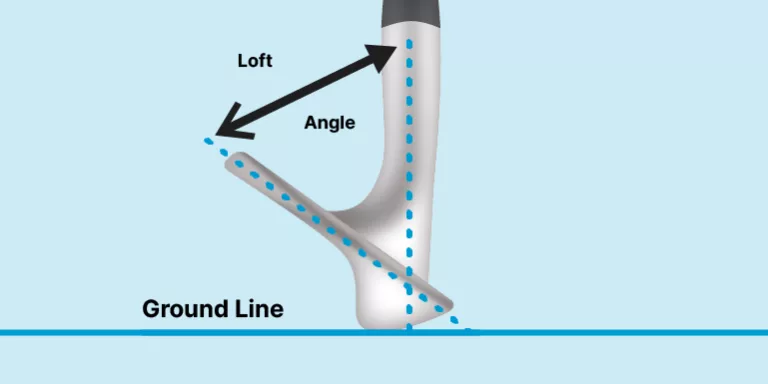
2. Leading Edge & Sole
The leading edge is the lower boundary of the face where the face meets the bottom of the club, also called the sole. Clubs also have a trailing edge, the bottom and back portion of the sole.
You never want to strike your ball with the leading edge, which results in a low-flying, powerless shot. Instead, you want to strike downward so that the leading and trailing edges contact the ground evenly, with the sole gliding across the surface rather than digging into it.
3. Bounce
Bounce describes how high the leading edge sits when the sole is rested on the ground. Though usually referred to as "bounce," we're talking about "bounce angle," which is the angle between the flat ground and the soul's surface from the point of contact with the ground to the leading edge.
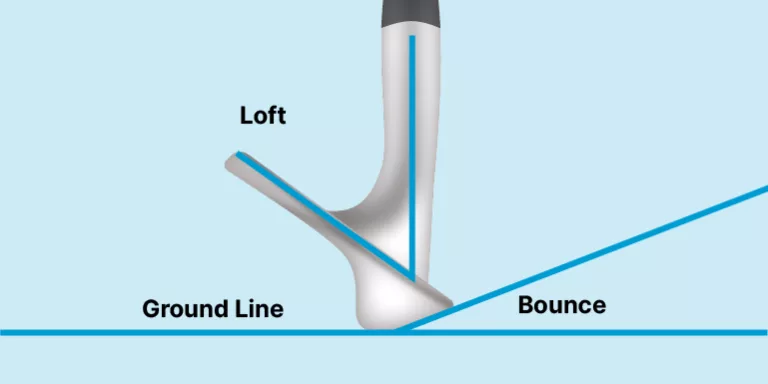
If you find that description confusing, you aren't alone. Bounce can be tricky to understand. Let's look at the differences between low, medium, and high-bounce wedges to explain better.
Low-Bounce Wedges
Low-bounce wedges have a bounce angle between 4-6 degrees, which is small enough that the leading edge sits almost flush with the ground. They're ideal for firm playing surfaces, heavy sand, or other playing conditions where the clubhead is unlikely to penetrate or sink into the surface. This allows you to strike the ball with your face's sweet spot without either (a) bouncing the sole off the playing surface or (b) digging the leading edge into the playing surface.
Playing surface isn't the only consideration when choosing the optimal bounce for your wedge. Your playing style matters, too. Golfers who strike downward at a sharp angle typically want lower-bounce wedges than those with longer, more looping swings and tend to dig into the ground at impact.
Pitching wedges and gap wedges tend to have low-bounce offerings.
Medium-Bounce Wedges
Medium-bounce wedges have a 7-10-degree bounce angle and are the most versatile option. They can be used in almost all conditions by almost any type of golfer.
Gap wedges, sand wedges, and lob wedges tend to have medium-bounce offerings.
High-Bounce Wedges
High-bounce wedges have a leading edge that sits higher above the surface than either medium or low-bounce wedges, which can be helpful when playing on softer surfaces or shooting out of bunkers with soft sand. The higher bounce angle prevents digging and helps create smoother shots. If you struggle with divots, you probably want to look at medium and high-bounce wedges.
Sand wedges and lob wedges tend to have high-bounce offerings.
4. Sole Grind
Many wedge manufacturers grind the soles of their wedges to tailor each club to specific playing styles or surfaces. A heel grind, for example, removes material from the wedge's heel, allowing you to open the face for extra high flop shots. For this reason, Tiger Woods uses a lob wedge with a heel grind.
Unlike loft or bounce angles, which are concrete measurements consistent from manufacturer to manufacturer, sole grinds can be brand-specific. While all heel grinds provide the same type of shot-making flexibility, you may prefer one manufacturer's heel grind over another.
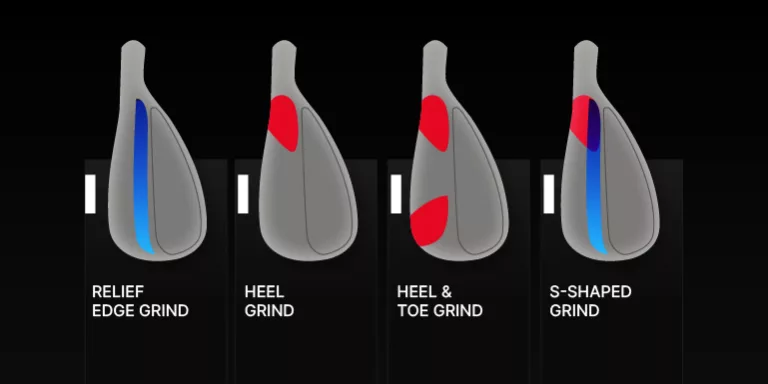
5. Grooves
You know your wedge's face has grooves, but why? Those grooves serve two important purposes.
First, they wick away moisture, dirt, and debris like your car's tires. This ensures clean, consistent contact, shot after shot.
Second, they increase backspin on your shots, which gives you three additional benefits:
- Longer flight times and shot distances
- Better control over shot trajectory
- Better stick and shorter roll-out near the pin
Over time, your club's grooves dull, and you lose these benefits, so make sure to get your grooves inspected and sharpened at least every 75 rounds.
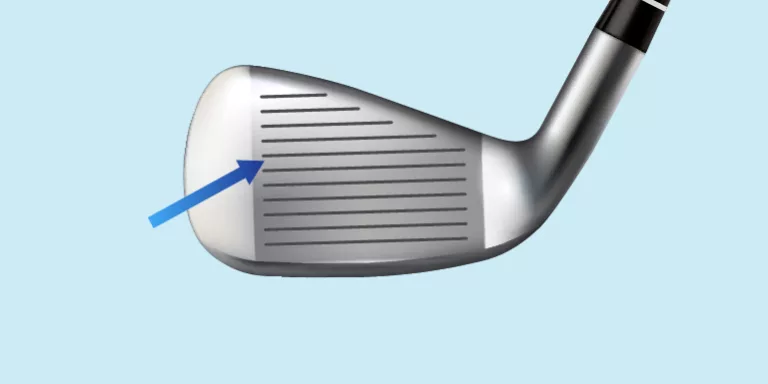
6. Flex
We've spent a long time talking about the clubhead, but what about the shaft? Let's change gears and talk about flex.
Flex describes how much give or bend your club's shaft experiences while swinging. Many wedge shafts have a lighter, more flexible tip section near the clubhead that subtly flicks the clubhead at the ball for improved trajectory and backspin.
When evaluating flex for your wedges, a major consideration is how you use them. Do you frequently take full or 3/4 swings with your pitching wedge? If so, you probably want your pitching wedge to have less flex (more stiffness) than your lob wedge, which you'll rarely (or never) swing at full power. In this instance, you might want your irons and pitching wedge to have similar shaft flex.
If you're shopping for wedges, you may encounter six flex strengths, which we've listed below from least flex (most stiff) to most flex (least stiff):
- Extra stiff flex: The stiffest shaft is available for golfers with no problem driving 300-plus yards.
- Stiff flex: Golfers who drive 250-300 yards usually have mid-to-low handicaps.
- Wedge flex: A slightly less-stiff shaft for mid-to-low handicap golfers who typically use a stiff flex shaft on their irons.
- Regular flex: Golfers who drive 200-250 yards usually have mid-to-high handicaps. Note that regular flex (generally) is less stiff than wedge flex.
- Senior flex: Golfers who drive 180-200 yards, usually older male golfers.
- Ladies flex: The least stiff shaft available for golfers who drive under 200 yards, usually female golfers.
Those guidelines should help narrow down the right flex for you, but ultimately, it's a personal decision based on your playing style and comfort.
7. Shaft Construction
You can't talk about a shaft's flex without talking about its construction and weight. Let's look at two different shaft materials: graphite and steel.
Graphite shafts are lighter and flex more than steel shafts, making them ideal for golfers with lower swing velocities who can't bomb the ball 250-300 yards or more. A graphite shaft's lighter weight makes it easier to handle, similar to bowling with a lighter bowling ball or swinging a lighter baseball bat, and the extra flex helps provide extra power to your shot but sacrifices control.
Steel shafts are heavier and stiffer than graphite shafts, which makes them ideal for golfers with higher swing velocities. Most low-handicap golfers use steel shafts because they tend to have higher swing velocities and because the stiffer shaft allows for better clubhead control and shot precision.
However, all golfers have a mix of graphite and steel in their go-to set of golf clubs:
- Drivers always have graphite shafts for extra flex and power.
- Irons are player-specific, according to the overview above.
- Wedges are player-specific according to the criteria above. Most golfers play the same material in their wedges and irons for club-to-club consistency, but that isn't a universal rule. Some players use graphite shafts in their irons for better distance but use lighter-weight iron shafts in their wedges for better control. Typically, these golfers never take full-swing shots with their steel-shaft wedges. Other players use graphite in their irons and wedges but prefer steel sand wedges for better control when playing in bunkers.
- Putters always have steel shafts for better control and precision.
Once again, the choice between graphite and steel is a personal decision based on your playing style and comfort.
8. Distance Gapping
We discussed loft gapping above and the importance of spacing your wedge loft angles to cover every possible shot. Let's revisit that briefly and get a little more specific by talking about distance gapping.
A club's loft is a key factor in determining how far that club strikes the ball, but it isn't the only factor. Everything we just covered above plays a part, too, plus the strength and skill of the golfer. As you mix and match different irons and wedges from different manufacturers, you change up various variables that affect shot distances. And even if you use a single set but swing your wedges differently, you may have gaps between club distances that leave you deficient on the course.
Swing velocity is a major factor affecting how far a club hits a ball, and it's something completely outside the scope of what club manufacturers can control. Think about two players with different swing velocities using the same wedge setup with 4-degree loft gaps. The stronger golfer with higher swing velocities will have larger distance gaps between each club than a weaker golfer with slower swing velocities who groups their shots within a tighter range.
The weaker golfer might not need such small distance gaps between each wedge and can afford to increase their loft gaps to 6 degrees.
